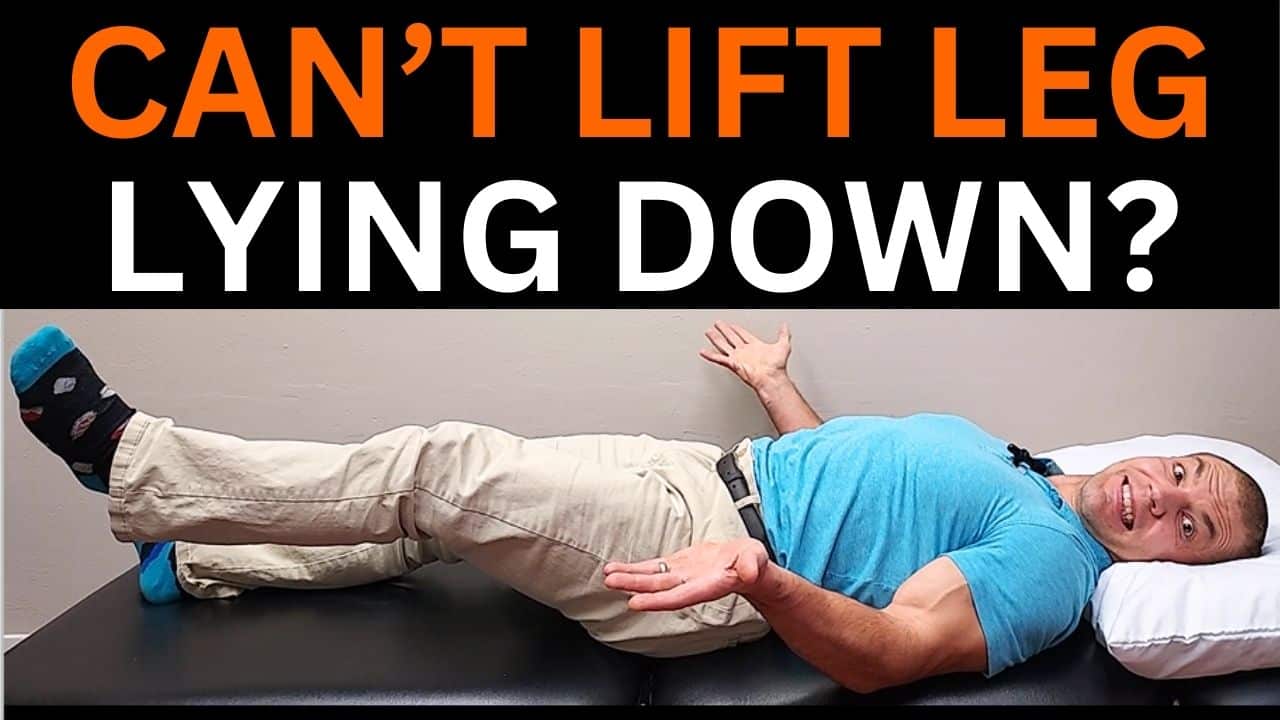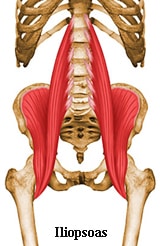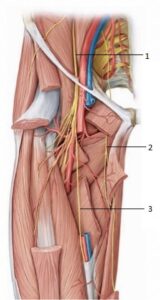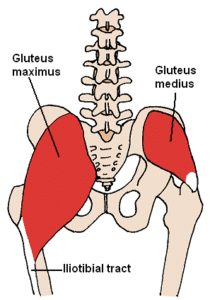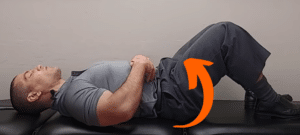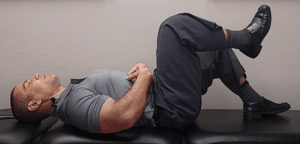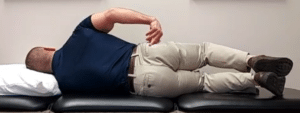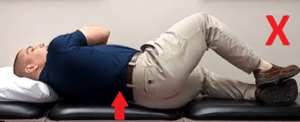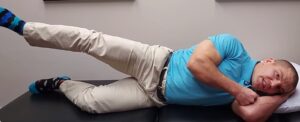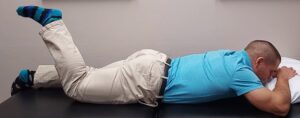Can't Lift Your Leg When Lying Down?
If you're unable to lift your leg when lying down, it could be caused by either muscle weakness or a nerve problem. Learn potential causes of being unable to lift your leg when lying down, plus some exercises to help.
Table of Contents
- Why Am I Unable To Lift My Leg When Lying Down?
- Being Unable To Lift Your Leg Is A Serious Problem
- Unable To Lift Leg When Lying On Back
- Unable To Lift Leg When Lying On Side
- Unable To Lift Leg Lying On Your Belly
- How To Improve Your Ability To Lift Your Leg When Lying On Your Back
- How To Improve Your Ability To Lift Your Leg When Lying On Your Side
- How To Improve Your Ability To Lift Your Leg When Lying On Your Belly
- Conclusion

Why Am I Unable To Lift My Leg When Lying Down?
The inspiration for this video came from an email that I received from a gentleman who had been unable to his leg when lying down for six to seven years.
Within minutes of reading the email, I knew what the problem was.
It's unfortunate that this gentleman had to suffer with this problem to the point where the nerve damage may be irreversible at this point.
So I wanted to share this story so that if you're having the same problem, you can find a solution before it's too late.
Being Unable To Lift Your Leg Is A Serious Problem
Before we get into the meat of the post, let me first say that if you are having weakness to the point where you can't lift your leg, this is not something you want to try to solve on your own.
But at least you'll have the information to go into your appointment well-prepared.
So let me first describe the problem.
This gentleman was having trouble lifting his leg when lying on his back.
He could move his leg out to the side (hip abduction) but could not move his leg back to the center (hip adduction).
He could also lift his leg lying on his side and could lift his leg lying on his belly.
He also noted that he did not have any pain, just weakness.
So what would cause that problem?
Unable To Lift Leg When Lying On Back
The most likely thing that would cause difficulty lifting your leg when lying on your back is weakness of your hip flexor muscles.
And being unable to move your leg back to midline indicates weakness of the hip adductors.
But why these muscle groups and not the other muscles?
Well, there are two possible reasons why a muscle might be weak without having pain:
- The muscle is weak and deconditioned
- There's a nerve problem in which the muscle isn't getting the signal to contract.
So let's look further into the innervation of the muscles that help you lift your leg.
The primary hip flexor that you use to lift your leg lying on your back is the iliopsoas muscle.
The iliopsoas muscle that runs from your spine and pelvis down to just below your hip joint.
The iliopsoas is innervated by the femoral nerve off of primarily the L2 and L3 nerve roots from your lower back.
1. femoral nerve. 2. obturator nerve. 3. saphenous nerve
Moving your leg toward midline uses the adductor muscle group on the inner side of your thigh.
Your hip adductors are innervated by the obturator nerve, which also comes from the L2 and L3 nerve roots in your lower back.
So if you're having trouble lifting your leg up when you're lying down and also having trouble moving it inwards, then it's very likely that that could be caused by an L2 and/or L3 nerve root problem in your lower back.
I'll cover some solutions for that in a moment, but I first want to describe the other muscle groups if you're having trouble lifting your leg lying on your side or on your belly.
Unable To Lift Leg When Lying On Side
Trouble lifting your leg when lying on your side is common in people who have hip arthritis, knee arthritis, sometimes just from disuse.
Sometimes though, it comes from a mild nerve root irritation in the lower back.
Sometimes the nerve root problem may not be painful but can cause hip weakness that eventually contributes to the hip or knee pain.
So if you can't raise your leg when lying on your side, you may have weakness of the gluteus medius, gluteus minimus, and/or tensor fascia latae.
Gluteus medius and gluteus medius weakness are far more common though.
The gluteus medius, gluteus minimus, and tensor fascia latea are innervated by the superior gluteal nerve from the L4, L5, and S1 nerve roots.
Unable To Lift Leg Lying On Your Belly
This is a less common problem that people experience, primarily just because we don't frequently have to lift our leg when lying our belly.
However, this uses the motion of hip extension, which uses your hamstrings and gluteus maximus.
The gluteus maximus is innervated by the inferior gluteal nerve from the L5, S1, and S2 nerve roots.
However, there are also ways to "cheat" when doing this by substituting your lower back muscles, which we'll get into later.
How To Improve Your Ability To Lift Your Leg When Lying On Your Back
If you can't lift your entire leg straight when lying on your back, start by lying on your back with your knees bent.
Use your hamstrings to bend your knees and use your hands if needed to get your knees bent.
Do a pelvic tilt to flatten your lower back down into the table.
This opens up the space where your nerve roots exit your spine. Since your iliopsoas muscle also attaches to your lower lower back, doing a pelvic tilt stabilizes the spine so that the iliopsoas has a stable base to pull from.
Then try lifting your legs one at a time like you're marching.
When you have your knee bent, lifting your leg is much easier for two reasons.
- It shortens the lever arm of your leg.
- It brings your thigh more vertical so that gravity has less of an effect on it.
Both of these factors make it easier to lift your leg when lying down on your back.
How To Improve Your Ability To Lift Your Leg When Lying On Your Side
If you have trouble raising your leg lying on your side, the same principles apply.
Shorten the lever arm by bending your knees. Now you're only lifting about half the length of the leg instead of the entire length.
Now do a clamshell exercise as shown below.
Now this is a very common physical therapy exercise for hip problems, but people often do this exercise wrong.
Make sure that you stay rolled forward as shown in the picture above so that you're not substituting your lower back and trunk muscles to lift your leg.
Don't allow yourself to roll back as shown below.
Think about activating or clenching your outer hip and buttock muscles (gluteus medius, gluteus minimus, and hip external rotators).
If you can't get these muscle to turn on at all, that might be more of a L4, L5, or S1 nerve root problem rather than a simple muscle weakness.
Just lift your leg a little bit.
It's more important that you activate the correct muscles at first and just get the right muscles firing and turned on, then how high you can lift your leg or how high you can lift your leg.
So just get the right muscles firing initially.
Level 2 Clamshell - Bent Knee Leg Lift
When you can do the clamshell exercise without rolling backward, then you can progress on to the second level.
This involves just separating your heels a little bit but still keeping your knee higher than your heels.
Level 3 Clamshell - Straight Leg Lift
Finally, when you've gotten strong enough to do the level 2 exercise for 10 repetitions holding for 10 seconds, then perform a straight leg lift when lying on your side.
Make sure to keep your toes turned up toward the ceiling (hip external rotation) while still keeping your body rolled forward.
Don't roll back!
How To Improve Your Ability To Lift Your Leg When Lying On Your Belly
Lifting your leg lying on your belly is somewhat of a difficult task under normal conditions because you don't have a lot of hip extension. 10 degrees hip extension is about normal.
So lifting your leg really high when lying on your belly is mostly lower back or lumbar extension.
Preventing lumbar extension when lifting your leg
To improve your ability to lift your leg when lying on your belly, you want to gluteus maximus without getting excessive lumbar extension. In order to do this, tighten your abdominals and keep your pelvis pressed into the bed or table or floor
Isolating the gluteus maximus when lifting your leg
Your hamstrings also help with hip extension when lifting your leg with the knee straight.
You can take your hamstring out of the movement by bending your knee.
Doing so shortens the hamstring across the knee and makes it unable to produce hip extension.
Now you're isolating the gluteus maximus.
Squeeze or clench your butt muscle, and then think about lifting your knee up a tiny, little bit off the surface that you're lying on.
It doesn't matter if your knee doesn't even move that much. Just get the right muscle working.
Conclusion
Hopefully you found this post helpful if you're having some trouble lifting your leg when lying down.
However, I want to again emphasize again though that this is not a problem that you should try to fix on your own.
The longer neurological weakness goes on, the less of a chance there is that you'll be able to fix it.
Nerve damage can become permanent.
So if you are having this problem, I would suggest you go see a healthcare professional about it sooner rather than later.
If you're in the St. Louis area, we'd be happy to help you here at More 4 Life.
Just tap the button below to request an appointment with one of our specialist physical therapists.
If you like this post, here are some other posts that you may enjoy:
Can't Lift Leg To Put Pants On? 5 Exercises To Stop Pain When Lifting Leg To Put Pants On
Can't Lift Leg To Put On Socks? How To Use A Sock Aid + Exercise To Help

